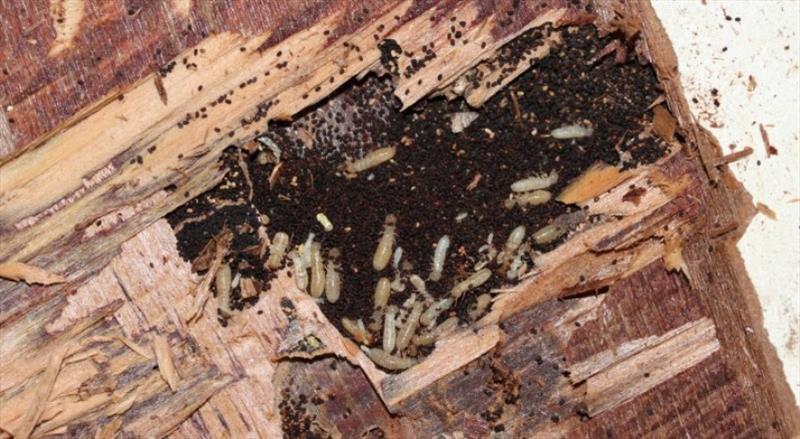
Vessel Biosecurity Quarterly - Private recreational vessels
by MPI NZ 7 Oct 2023 22:00 UTC

Private recreational vessel © MPI NZ
Information update for yachts
In September, a representative from the Invasive Species Team alongside a Biosecurity officer from Border Clearance Services attended two Yacht regattas in the South Pacific. These were the Musket Cove Regatta near Nadi, Fiji and the Vava'u Blue Water Festival in Vava'u, Tonga.
With many recreational yachts predicted to visit New Zealand in the 2023/24 summer season, Biosecurity NZ took the opportunity to attend and provide information about vessel requirements and the clearance process when arriving in New Zealand. The staff attending gave presentations and were on hand to answer questions from the yachties that were attending.
Termites on yachts
Upon arriving in New Zealand, international yachts are inspected for biosecurity risks, including termites. Most termite species eat grass, soil or fungi, but there are a number of species that eat wood and can cause serious damage to timber in service and timber products, and are considered to be of high biosecurity risk to New Zealand.
New Zealand has six species of termites, of which none are significant pests.
Termites are cryptic and difficult to discover during an inspection of a yacht. Signs of termite activity can include holes in timber, frass/ sawdust like material, mud tunnels, or discarded termite wings. Biosecurity officers examine all wooden structures visually, as well as by tapping in case it sounds hollow, and warrant a closer inspection.
Risk species for vessels include:
West Indian drywood termite (Cryptotermes brevis and other Cryptotermes species) which is present in the Americas, Africa, Australia, and some Pacific Islands.
Western drywood termite (Incistermes minor and Incisitermes snyderi) which is present in the USA (including Hawaii), Mexico, China, Japan, and some Pacific Islands.
Subterranean termites (Coptotermes formosanus, Coptotermes acinaciformis, and other Coptotermes species) which are present in Asia, USA (including Hawaii), and some Pacific Islands.
Drywood termites are very likely to occur on yachts where they can infest dry timber and form small colonies, from which they receive all their moisture and food requirements. Subterranean termites are occasionally found on yachts; however they require a constant moisture source through rain or plumbing. They are more obvious and form large colonies with mud tunnels to forage for food from various timber.
Because exotic termites pose a high risk to New Zealand, when a yacht is found to have exotic termites on board, Biosecurity NZ will require the yacht to undergo treatment to ensure that these exotic termites are eradicated. Owners of recreational vessels sailing to New Zealand should be on the lookout for symptoms of termites which can include holes in timber, frass (i.e. debris produced by insects), mud tunnels, or discarded termite wings. If these or any other hitchhiking pests like ants are observed onboard, point out any concerns to our Biosecurity officers on arrival so the risk can be managed before full clearance is given.
If you want to know more, feel free to contact us at: .